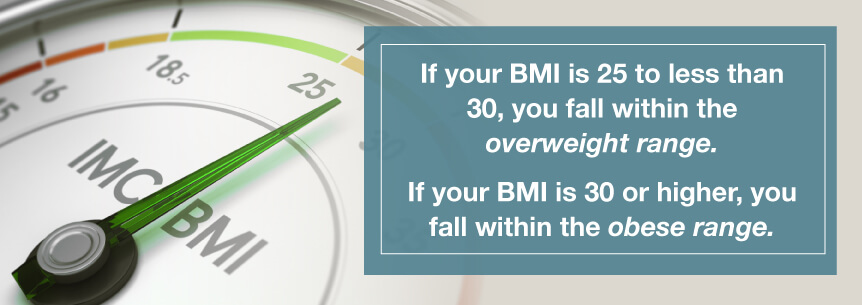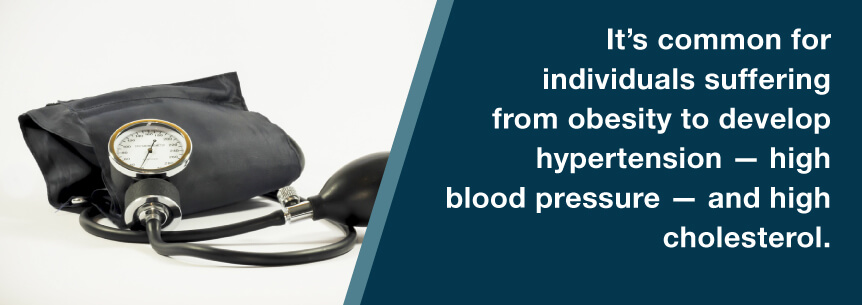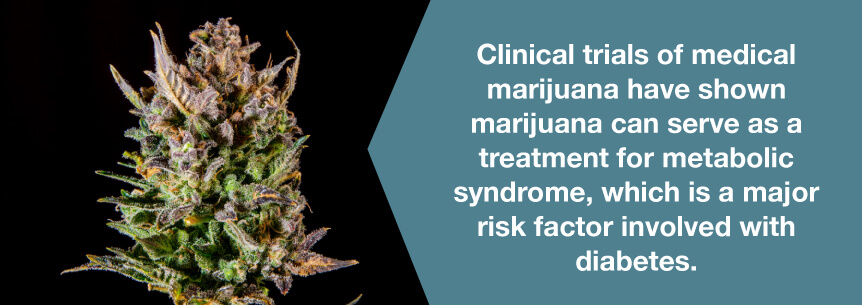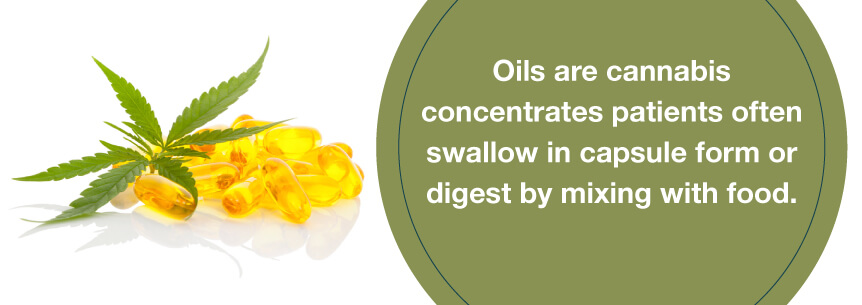
Obesity is a serious health condition. Despite its prevalence, the obesity continues to rise in the United States and around the world. In fact, according to the National Health and Nutrition Examination Survey as many as one in every three adults is considered obese while one in every thirteen adults is morbidly obese.
Like many other diseases, children aren’t exempt from obesity. In the U.S., childhood obesity has tripled since the seventies. The Center for Disease Control and Prevention (CDC) annual report revealed one in five school-age children is obese.
Being obese is beyond being overweight. “Obesity” is the medical term used to describe an individual whose body fat significantly exceeds what’s considered healthy. On the other hand, being overweight refers to a person who weighs more than ideal.
Physicians, dieticians, weight loss specialists and others in the medical field measure obesity by a person’s Body Mass Index, also known as BMI. Healthcare professionals use BMI calculations as a screening tool for being overweight or obese.
Body Mass Index is a statistical measurement of body fat derived from a person’s weight and height. BMI is a useful way to measure body fat in men and women over the age of twenty. For children, using the Body Mass Index method to measure body fat and determine obesity isn’t effective since children are constantly physically growing.
You can use a BMI calculator as well as BMI chart to help determine the percentage of body fat that an individual has.
The CDC presents guidelines of BMI levels. These are:

Individuals with a BMI of under 25 are considered normal weight unless their body mass index is under 18.5, which then classifies them as being underweight.
Healthcare providers use a plethora of other assessments to determine whether a person is medically obese. These assessments include:
Obesity is usually the result of overeating and a lack of physical activity. However, other factors can influence weight gain:
Initially, being obese may not cause any noticeable problems. However, carrying excess fat, over the course of time, can affect your quality of life. This complex disorder can trigger a plethora of other health issues. While there are no specific symptoms of being obese a person may experience, complications can arise as a result of uneven body fat distribution.
If you have a significant accumulation of body fat, you can experience daily health problems such as:
Besides these day to day limitations, obesity can result in a host of serious health conditions. It’s common for individuals suffering from obesity to develop hypertension — high blood pressure — and high cholesterol. These conditions significantly increase your chances of being diagnosed with life-threatening cardiovascular diseases, like:

Also, obesity and diabetes are closely linked. Studies have revealed individuals with a high accumulation of body fat are likely to develop type 2 diabetes. Early symptoms of type 2 diabetes are:
Obesity doesn’t just affect physical health, but individuals may also experience emotional issues. Low-self esteem and depression are common, especially in obese children. These psychological problems can become worse when left untreated. It affects their relationships with family members, friends and even their work life.
Through evaluation of thousands of different obese individuals, researchers were able to identify six “types of obese individuals.” These different subgroups of individuals with obesity include:
Recognizing the differences between individuals who are obese is essential for treatment. A “one size fits all” approach to treating the obesity epidemic is ineffective. By understanding each subgroup of obese individuals, medical professionals can devise a weight loss plan that works for a specific individual.
Healthcare organizations collected data on obesity, and their results are below:
Obesity has always played a major role in U.S. culture, yet, as a chronic disease, it’s less than 100 years old. According to researchers, in the 1980s through the ’90s there was a significant increase in sugar and fat intake. During this time, states were making efforts to reduce malnutrition by providing low-cost sources of calories. Before this surge, no state had an obesity rate over 15 percent. However, during the nineties, the obesity rate doubled in many states across the country.
The goal of obesity treatment is for the individual to reach a healthy weight and maintain ideal weight. Treating obesity can be extremely challenging, which is why medical providers will employ a host of different measures to promote weight loss.
Two main types of bariatric surgery include:
Since obesity is a widespread and chronic problem facing many Americans, long-lasting solutions intended to slow or halt the increase in obesity rates is sorely needed. Studies examining the roles inflammation and vitamin D promise a better understanding and treatment of obesity.
One recent study examined the freezing of neurons carrying hunger signals in ten participants who were mild or moderately obese. A radiologist used argon gas sent through a needle in the patients’ backs to freeze the nerves sending hunger signals from the stomach to the brain. After following the patients for three months, all participants reported significant weight loss, a lower BMI and a reduced appetite.
Medical marijuana may be a suitable alternative treatment option for those who suffer from obesity. THCV and cannabidiol, both chemical components in marijuana, suppress appetites. These compounds also have an impact on the level of fat in the body and its response to insulin, a key hormone controlling sugar levels in the blood. Clinical trials of medical marijuana have also shown marijuana can serve as a treatment for metabolic syndrome, which is a major risk factor involved with diabetes.

The goal of one study was to confirm the relationship between obesity and insulin resistance (IR), and cannabis use. IR is a diabetes-developing risk factor — cannabis can help with this condition too. Researchers examined almost 800 adults in the study. Over half of them used medical pot. The study analyzed multiple variables and showed that those who used the herb in the past year had fewer chances of becoming obese.
Marijuana is often an effective appetite stimulant, so many people would believe using it would promote weight gain. But, on the contrary, it is linked with a:
Various surveys also showed the obesity prevalence is lower in those who use cannabis compared to those who don’t use the herb.
Cannabis for obesity might also interact with or alter gut flora in a way that makes it tougher to gain weight. Gut flora help with healthy digestion since they break down proteins and dairy products. They also help with certain immune system functions.
Medical marijuana may be able to help with many obesity side effects, including:
Some types of weed contain cannabinoids or terpenes to suppress the appetite. The research found strains containing the THCV compound may suppress the appetite. THCV works as an antagonist of certain receptors — CB1 and CB2 — meaning it blocks THC, which keeps you from getting high and getting the munchies. Some good cannabis and obesity strains include:
These marijuana strains act as appetite stimulants:
There are numerous forms of marijuana and obesity treatment delivery methods, including:
Oils
Oils are cannabis concentrates patients often swallow in capsule form or digest by mixing with food.

Edibles
You infuse or bake cannabis in various types of food, candy products and snacks. You’ll also find edibles in the form of:
Beverages
Certain beverages are mixed with oils or infused with cannabis. Beverages come in sodas, teas, beer and elixirs.
Capsules
You fill cannabis caps — marijuana pills or capsules — with weed wax, oil or extract.
Sprays
These are THC or CBD infused liquids where you spray the psychoactive components under your tongue, where they are quickly absorbed.
Tinctures
These are cannabis plant-extracted liquids using alcohol. You place a few drops under your tongue for quick absorption.
Smoking
Smoking is the typical way many individuals use cannabis. You smoke weed out of joints, bongs, blunts, hookahs or bubblers.
Vaporization
Vaporization is also known as vaping. Many people use vaporizers since they believe inhaling medical pot from a vaporizer is less irritating and harmful to the lungs than traditional smoking methods.
Dabbing
Dabbing is similar to vaping. When making dabs, people extract butane hash oil from the cannabis plant and then concentrate it into wax form. You heat a bong or glass pipe with a blowtorch and once hot, place the waxy concentrate onto the pipe which creates an instant vapor. Dabs are much more potent, creating a stronger high.
Topical Oils
Topical oils are thick extracts absorbed through your skin. You use them for muscle soreness or aches. You don’t get high from topicals, and they’re used primarily for medicinal purposes.
Because information about medical conditions treated by marijuana is not as accessible as conventional medicine, you need to find a reliable source so you can make informed decisions. MarijuanaDoctors.com is your one-stop resource for cannabis information so you can reap all the health benefits the herb has to offer. You can also trust MarijuanaDoctors.com to help you find a qualified cannabis doctor and locate a dispensary to obtain your natural medical cannabis for obesity treatment.
Find A Doctor Find A Dispensary